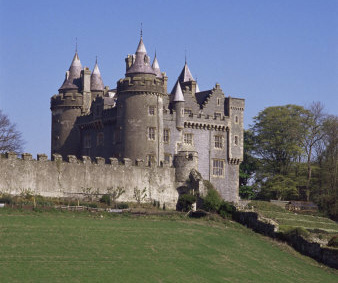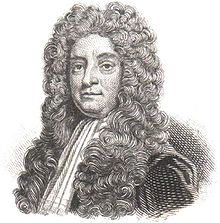Go to famous Irish People |
Famous People of Ireland.Page under construction
|
| |
Sir
Hans Sloane |
||||
Bad weather forced the salvage ship to abandon the wreck before all the treasure was raised. A second expedition was organised to recover the remaining treasure, James II agreed to sponsor this expedition which was accompanied the the frigate Assistance and a force of 200 men to provide security. Albemarle was nominated by James to accompany the expedition and was to receive 15% of all monies made for the crown. The following text is taken from a letter written by Sloane to a friend. "Besides 15 tuns of pieces of eight, they have a great many ingots of Mexican silver in bars, and some quantity of gold, although but little for the divers could not come up with it, it was so weighty. "The ship being forced of the place with bad weather, came away without bringing all; I believe she'll set sail with us for the same place, from whence you shall hear from me." Sloane was invited by Albemarle to join the second treasure voyage as his personal physician, naturally he jumped at the opportunity. Not only was he promised a personal fortune, but, as a keen naturalist, the trip would afford him the opportunity to explore the flora and fauna of Jamaica. When the second expiation reached the wreck in December 1687, they discovered that all the readily accessible treasure had been raised in their absence by local adventurers and privateering ships, the trip was a complete financial failure. Albemarle retreated to the Governor's Residence at Port Royal and preceded to drown his sorrows, his health deteriorating rapidly in the tropical climate. Sloane spent much of his time when not tending the sickly duke, traversing the island on foot and horseback, collecting plants and shrubs guided by slaves from the sugar plantations with knowledge of local medically useful plants. Perhaps some of these slaves may have been his fellow Irish county men, transported from Ireland in their tens of thousands by Cromwell to the Caribbean after the 1641 rebellion. Sloane stayed fifteen months and noted about 800 new species of plants. In 1696 he published an elaborate catalogue in Latin; and between (1707–1725) he published two folio volumes about his adventures. Albemarle died ten months into their trip of dropsy, which was diagnosed by Sloane, wherein the rest of the expedition party returned to London, arriving just in time for the coronation of William III and Mary in the spring 1689. In 1693 he became secretary to the Royal Society where he edited the Philosophical Transactions for twenty years. now know that Jamaica financed Sloane's successes in rather more prosaic terms. While there, he befriended a wealthy plantation owner and medical man, and subsequently married his widow. On his return to London, Sloane benefited from the substantial profits yielded by her departed husband's Jamaican sugar plantations and buoyant import-export business. Albemarle's physician may not have had as much success with his Spanish gold-seeking as his noble employer but the Atlantic slave trade, and the bartering and dealing in sugar and sugar-related products including the large-scale importing of cinchona bark - the source for quinine - and cacao, brought him comparable riches. Ballasted by colonial wealth, his medical and collecting careers prospered So, Sloane's rise to public prominence as a distinguished collector and scientist came in no small part from his shrewd seizing of opportunities to improve his career prospects, and his eye for suitable openings in the market. He was by temperament an applied rather than a pure scientist, alert to real-life problems and practical opportunities. For me, this "new" Sloane - the hands-on, shrewdly entrepreneurial Sloane - sits more comfortably with 21st Century images of scientific success in public life than the one I used to have. Sloane the keen botanist, sitting late into the night in Port Royal, overseeing the painstaking preservation and pasting into folio volumes of his plant-specimens, belongs with a correspondingly old-fashioned view of the early Royal Society, debating genteelly and performing drawing-room experiments, away from the hurly-burly of ordinary, everyday life. Sloane the colonial entrepreneur is much more a man of his time. He reminds us that in every generation, the brilliant mind - in whatever field - does not float high above everyday life, but is tethered to, and integrated with, the economic and commercial world of his age. Sloane married Elisabeth Langley, who was the widow of Fulke Rose of Jamaica, and had three daughters with her, Mary, Sarah and Elizabeth.[1] They also had one son, Hans. Of the four children only Sarah and Elizabeth survived infancy. Sarah married George Stanley of Paultons and Elizabeth the future Second Baron Cadogan. Eventually he became physician to George III, he had a long distinguished career traveling widely making many scientific discovery's. He was a member of the newly established Royal Institution set up to research new scientific ideas such as Harrison's Chronometer. He set up the Chelsea Physic garden to study plants and their medicinal qualities. At his death he left a vast collection of items of scientific interest, as well as over fifty thousand books and manuscripts. Sloan met with George III and he valued his collection at £250,000 but informed the king that he would accept one tenth of that value, a lottery was arranged to raise the £25,000. This formed the nucleus of the British Museum established by an act of parliament in 1753, his books went to found the British Library. You can still see parts of his collection in the Natural History Museum and scientific instruments in the Science museum. Hans Sloane died on the 11th January 1753 and was buried on 18 January 1753 at Chelsea Old Church with the following memorial:- "In memory of Sir Hans Sloane, Bart, President of the Royal Society and of the Collage of Physicians, who died in the year of our Lord 1752, the ninety-second year of his age, without least pain of body, and with a conscious serenity of mind ended a virtuous and beneficient life. This monument was erected by his two daughters, Elizabeth Cadogan and Sarah Stanley" Read about Sir Hans Sloane at the Natural History Museum |
||||
|
Go to famous Irish People home page. |
|
 his father who
died when he was six years old was land stewart (Estate manager)
for the owner of Killyleagh Castle (Pictured right) his formative
years were spent on and around
his father who
died when he was six years old was land stewart (Estate manager)
for the owner of Killyleagh Castle (Pictured right) his formative
years were spent on and around  spending
some time at Paris and Montpellier, and taking his M.D. degree at
the University of Orange in 1683. He returned to London with a considerable
collection of plants and other curiosities, of which the former
were sent to Ray and utilized by him for his History of Plants
spending
some time at Paris and Montpellier, and taking his M.D. degree at
the University of Orange in 1683. He returned to London with a considerable
collection of plants and other curiosities, of which the former
were sent to Ray and utilized by him for his History of Plants